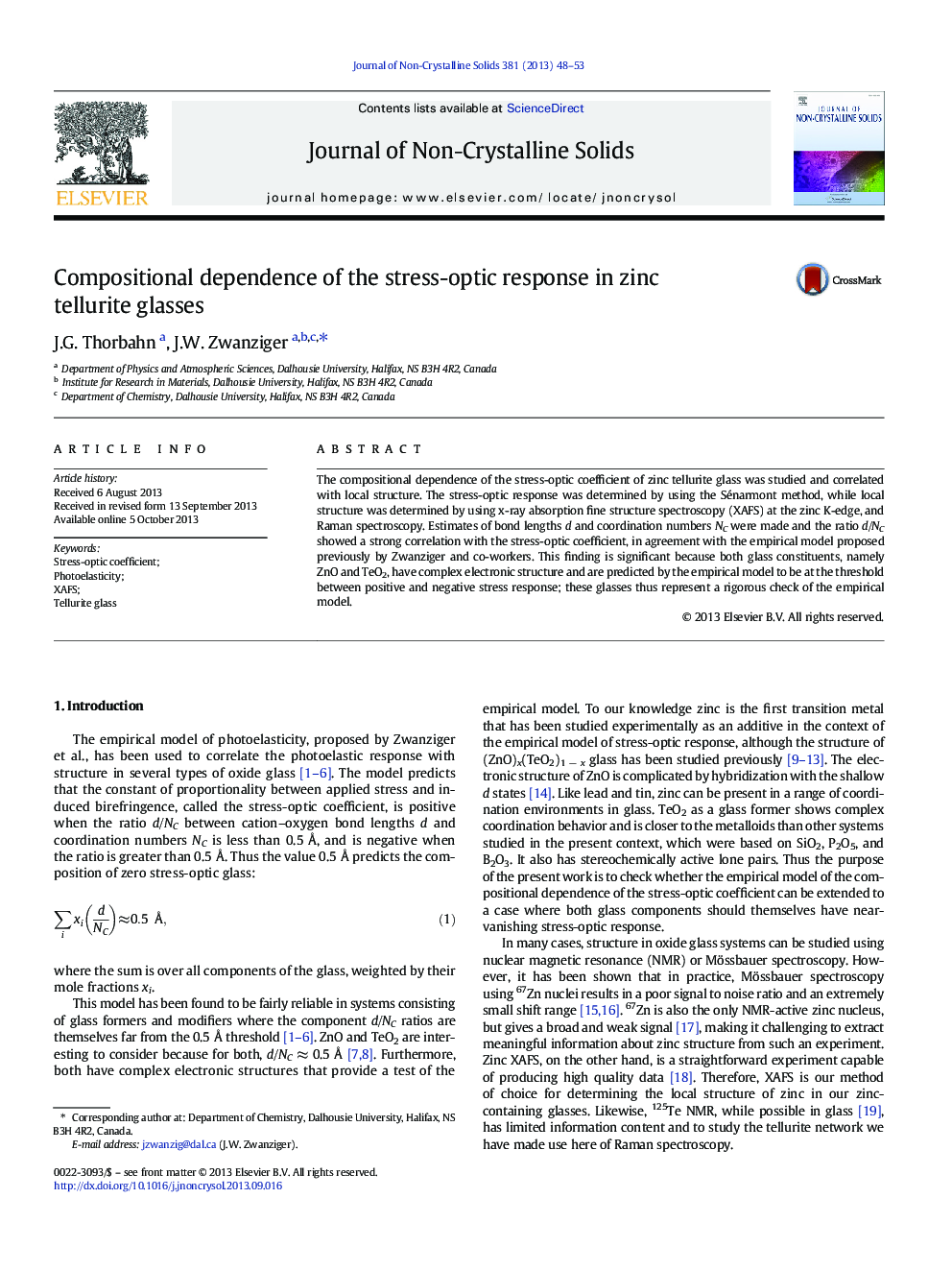| Article ID | Journal | Published Year | Pages | File Type |
|---|---|---|---|---|
| 1481166 | Journal of Non-Crystalline Solids | 2013 | 6 Pages |
•Photoelasticity in zinc tellurite glass follows the compositional rule of Zwanziger et al.•EXAFS shows the zinc coordination to drop from six to four as zinc content increases.•Raman spectroscopy shows that zinc disrupts the tellurite network.•All zinc tellurite compositions show low stress-optic response.
The compositional dependence of the stress-optic coefficient of zinc tellurite glass was studied and correlated with local structure. The stress-optic response was determined by using the Sénarmont method, while local structure was determined by using x-ray absorption fine structure spectroscopy (XAFS) at the zinc K-edge, and Raman spectroscopy. Estimates of bond lengths d and coordination numbers NC were made and the ratio d/NC showed a strong correlation with the stress-optic coefficient, in agreement with the empirical model proposed previously by Zwanziger and co-workers. This finding is significant because both glass constituents, namely ZnO and TeO2, have complex electronic structure and are predicted by the empirical model to be at the threshold between positive and negative stress response; these glasses thus represent a rigorous check of the empirical model.
